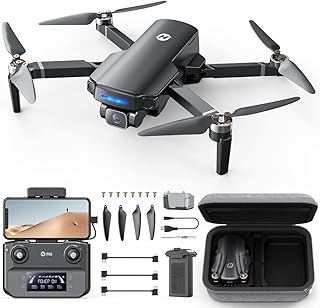Drones in Warfare: The Changing Face of Combat
The rise of drones in warfare has ushered in a new era of combat, fundamentally altering the dynamics of conflict. This essay will explore the multifaceted impact of drones, focusing on their advantages, limitations, and the ethical dilemmas they present.
Advantages:
* Precision and Minimized Collateral Damage: Drones offer unmatched precision, allowing for targeted strikes with significantly reduced collateral damage compared to traditional airstrikes. This minimizes civilian casualties and potentially reduces the escalation of conflict.
* Remote Operation and Reduced Risk: The remote operation of drones allows for combat missions without putting pilots in harm's way, significantly lowering the risk of casualties on the operator side.
* Cost-Effective and Sustainable: Drones are generally less expensive to operate than traditional aircraft, offering a more sustainable and economical approach to warfare.
* Intelligence Gathering and Surveillance: Drones equipped with advanced sensors can provide real-time intelligence and surveillance capabilities, enabling a deeper understanding of the battlefield and potential targets.
* Persistent Surveillance: Drones can maintain a constant presence over a target area, providing continuous monitoring and early warning of potential threats.
Limitations:
* Dependence on Technology: Drones rely heavily on technology and communication networks, making them vulnerable to technical failures, cyberattacks, and electronic warfare.
* Ethical Concerns: The remote nature of drone warfare raises concerns about the dehumanization of combat and the potential for unintended consequences.
* Limited Payload Capacity: Compared to traditional aircraft, drones have limited payload capacity, restricting their ability to carry heavy weapons or equipment.
* Operational Range: Drones have a limited operational range, often requiring forward operating bases or specialized infrastructure.
* Public Perception: The use of drones in warfare can generate significant public backlash and raise concerns about the impact on civilian populations.
Ethical Dilemmas:
* Targeting and Civilian Casualties: The ability to conduct strikes from afar raises ethical questions regarding the targeting process and the potential for civilian casualties.
* Accountability and Responsibility: Determining accountability for drone strikes and the consequences of these actions poses a significant challenge.
* Dehumanization of Warfare: The remote nature of drone warfare raises concerns about the dehumanization of combat and the potential for a disconnect between the operator and the consequences of their actions.
The Future of Drone Warfare:
* AI and Autonomous Systems: The integration of artificial intelligence and autonomous systems is likely to further enhance the capabilities of drones, raising new ethical and legal questions.
* Countering Drone Threats: The development of counter-drone technologies and tactics will be crucial for mitigating the risks associated with the increasing use of drones in warfare.
* International Regulations: The need for international regulations and agreements governing the use of drones in warfare is becoming increasingly apparent.
Conclusion:
Drones have undoubtedly transformed warfare, offering significant advantages while presenting complex challenges. The future of drone warfare will likely see the further development and deployment of more advanced technologies, demanding careful consideration of the ethical, legal, and societal implications. As we move forward, it is essential to engage in open dialogue and robust debate to ensure responsible and accountable use of this powerful technology in the context of global security.


